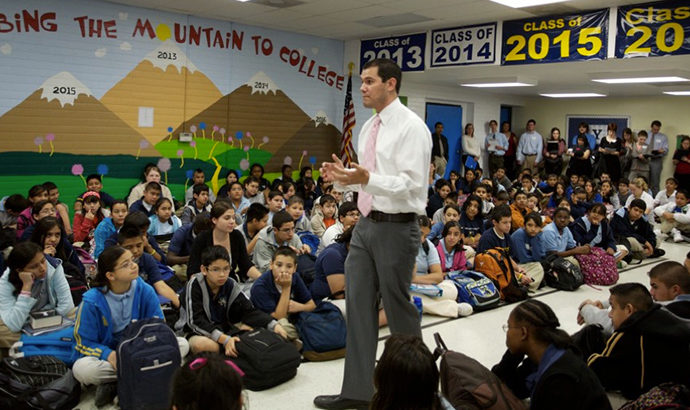To Dismantle Structural Racism, Having School Leaders Who Look like Me Matters
ByFreddy Gonzalez
When you picture a public charter school teacher, what image comes to mind? Chances are, it doesn’t look like me: a Latino male.
As a former public school student in south Texas, and a longtime charter school educator, I know how powerful it is when students learn from adults who look like them, who can affirm their identity and resonate with their lived experiences. If you look at public charter schools today, you will see that more teachers and leaders are Black or Latino than ever before. Representation matters, and we need to do better in our schools.
And I hope the new Secretary of Education, Miguel Cardona, will lead us on that path. Secretary Cardona, who spoke only Spanish until entering school, son of Puerto Rican farmers with a second-grade education, truly understands the significance of having role models in the classroom. He once said, “there were times throughout my youth that I think people had lower expectations than they should have. It just made me hungrier.”
There are over 50 million children in America’s public schools, many trying to prove their potential too. Whether they’re learning online, in-person, or some combination of the two, one thing is clear: to really empower a racially diverse student body and build a just world, you need Black and Latino teachers and leaders. While America’s public school student population has steadily gotten more racially diverse, the teaching pool, at about 80 percent, has remained largely white.
The national outcry for racial justice has yielded an even greater urgency to rooting out and dismantling systemic racism in our schools. The first step is changing who sits at the table. For years, we have been focused on recruiting, developing, and sustaining a community of educators that better reflect the identities and experiences of our students.
While there is much work to be done, public charter schools are already heading in the right direction. A recent study showed that traditional public schools and charter schools serve a similar proportion of Black students, but charter schools have about 35 percent more Black teachers. At KIPP, 55 percent of our students and 42 percent of our teachers identify as Black. While we are getting closer to matching our student population, the work is far from over.
And when you look at school leadership, those numbers have increased as well. According to the National Center For Education Statistics, in the 2017-18 school year, approximately 29 percent of charter school principals identified as Black or Latino. For example, at KIPP, 37 percent of our current school leaders identify as Black, compared with 10 percent among traditional schools. In the last five years, KIPP has doubled the number of Black and Latino superintendents in our regions. These educators now make up close to 50 percent of our top leadership; by comparison, less than 9 percent of public school superintendents nationwide identify as Black, Indigenous and People of Color (BIPOC).
Read the full article here.
